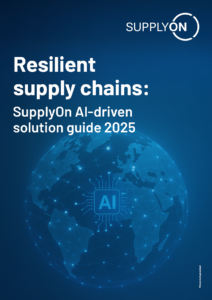SupplyOn sets the stage for agile development in the next six sprints
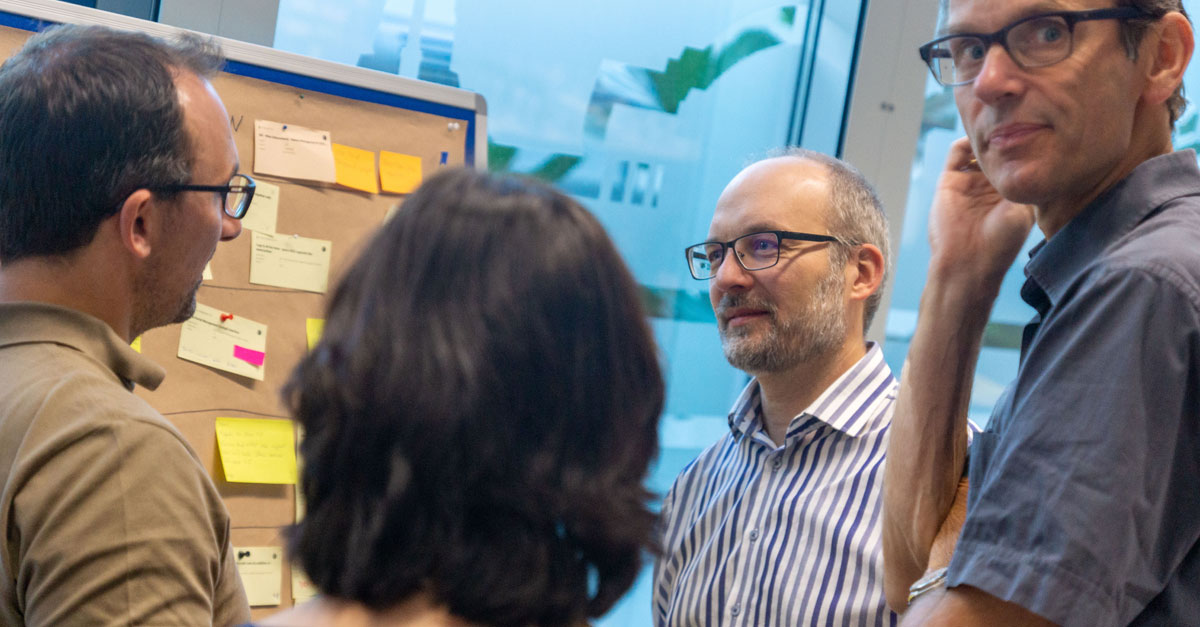
“I have two user stories here with a total of 12 Story Points, which I cannot take care of in my team,” Martin Weber, Product Manager, says to his colleague. “It is part of a feature of SupplyOn Project Management, and your team knows all about it. Is there a chance you can help out?”
Conversations like this are the heartbeat of our PI (Program Increment) planning. Just recently, around 100 colleagues from 16 agile Scrum teams met again near Munich Airport to plan software development for the next twelve weeks.

In the spring of this year, SupplyOn entered the next stage of agile software development to better coordinate the numerous Scrum teams across the group. Since then, we have been using the industry-proven Scaled Agile Framework SAFe, which my colleague has already described in another blog post.
Clear structures provide clear orientation
For the third time this year, product managers have broken down customer requirements into well over 100 features in order to schedule them for implementation by the agile teams. The precise and definite planning of these features then takes place in the so-called PI Planning, a two-day event. PI stands for Program Increment. Each of these increments is divided into six two-week sprints. The PI Planning has a fixed, recurring agenda, like everything in SAFe. Cadence, the fixed rhythm, is reflected in SAFe by the sequence of weeks and appointments. It offers employees a clear framework and supports a focus on content.
Kick-off for PI Planning
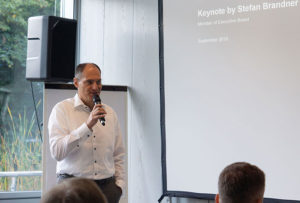
The joy of reunion among the participants, who normally work in many different countries, is always great. After coffee, sweet pastries and fruit, Dr. Stefan Brandner, member of the SupplyOn Executive Board, opens the PI Planning right on time at 9:00 a.m.
After giving a lecture on the current challenges facing our customers last time, this time he explains the four pillars of SAFe and their benefits for SupplyOn and its customers. Of course, all of these pillars are familiar to us from the SAFe training courses of recent months. But recalling these key messages shortly before planning the next twelve weeks gives the event the right boost.
The Business Owners follow suit and present the development focuses in their respective areas. Afterwards, the individual Product Managers introduce selected, primarily cross-team features.
Applause – a lot of work for the next weeks!
PI Planning, Day 1

10:55 a.m.: The Release Train Engineer (RTE) ends the joint kick-off event after a few instructions on how to proceed. The teams gather around their tables. The Product Managers explain additional features before the team breakouts start. Here, each team then evaluates the features that have been broken down into individual user stories and plans these into the respective sprints on its team board.
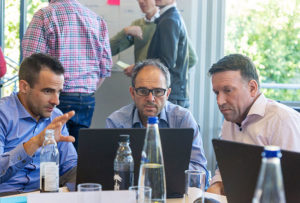
Dependencies to other teams are clarified and visualized with strings on the Program Board. Every 75 minutes, the teams’ Scrum Masters meet to discuss the planning progress with the RTE and find solutions for raised issues as quickly as possible.
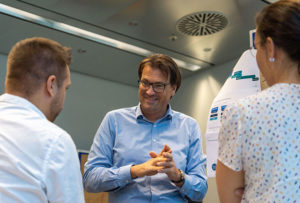
3:30 p.m. – Draft Plan Review: The teams present their plans to the Business Owner, address risks and request decisions.
5:00 p.m.: The teams set out to spend the evening together, be it in Munich, Landshut, or wherever the product owner has planned it. The Business Owners and Product Managers need to stay and reach the required decisions – even if this may take a long while. Yet, the teams must be able to plan on the next day. Today, after two and a half hours, all alternatives have been evaluated and decisions reached.
PI Planning, Day 2
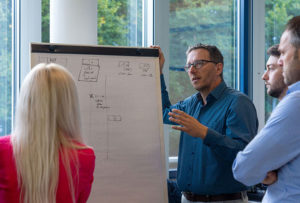
9:00 a.m.: The Product Managers present these decisions to the plenum and the teams immediately start to incorporate them into their planning.
The clock is ticking. We only got till 2 p.m.
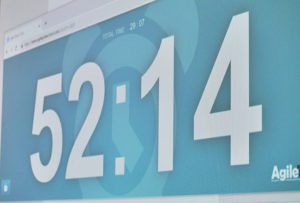
By then, on the team boards, the user stories must have been planned into the six sprints, the risks clearly formulated and assigned, and business objectives formulated. The business objectives formulated by the team are a consolidated feedback to the business owner to ensure that the team has understood the expectations correctly.
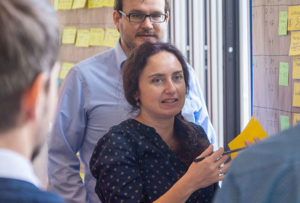
In addition, the dependencies must be noted on the Program Board and the overall risks on the Risk Board.
The last minutes are on, and so are the last adjustments.
Now it is 2:00 p.m. and the Final Plan Review starts.
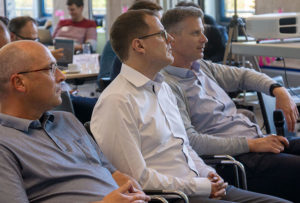
As in the Draft Plan Review, the teams present the final plans to the Business Owners. The other teams pay attention and check if there might still be unrecognized dependencies.
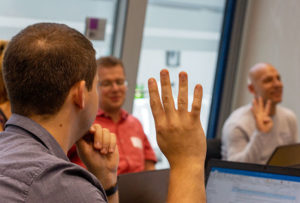
The program risks are then discussed and the PI Confidence Vote published. In the confidence vote, each team indicates on a 1 to 5 scale how well they think the team plan can be implemented. The bigger the number, the better. On average, the SupplyOn Release Train reached 3.4 this time. A score below three would mean that the plan would have to be revised again. But this is not the case for any team. The third PI Planning at SupplyOn can therefore be successfully closed.
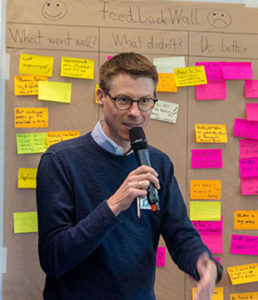
The end is the beginning
A spirit of optimism.
But slow down, take pictures of all boards first and then pack everything. In the next days, the teams have to transfer the planning to Jira, a planning system, and the PI with its six sprints can start.
Florian, member of the LACE team (Lean-Agile Center of Excellence), SupplyOn’s agile transformation center for the SAFe implementation




